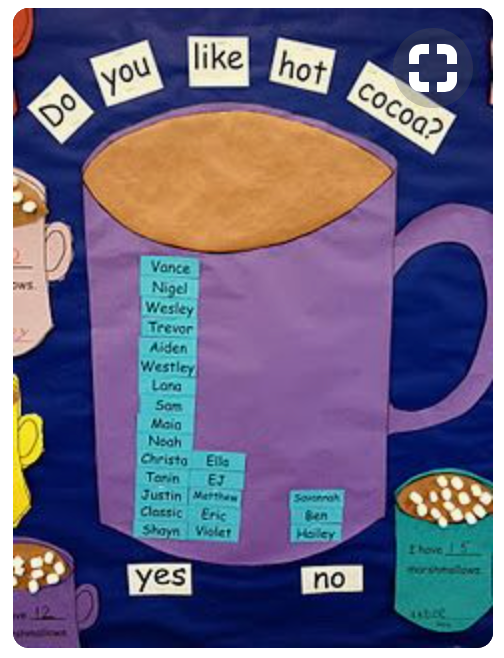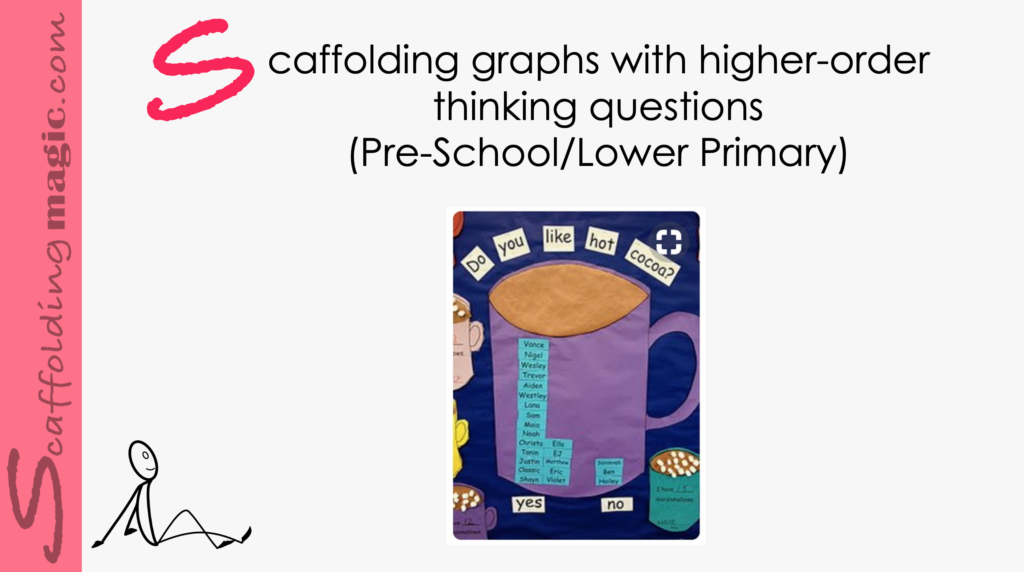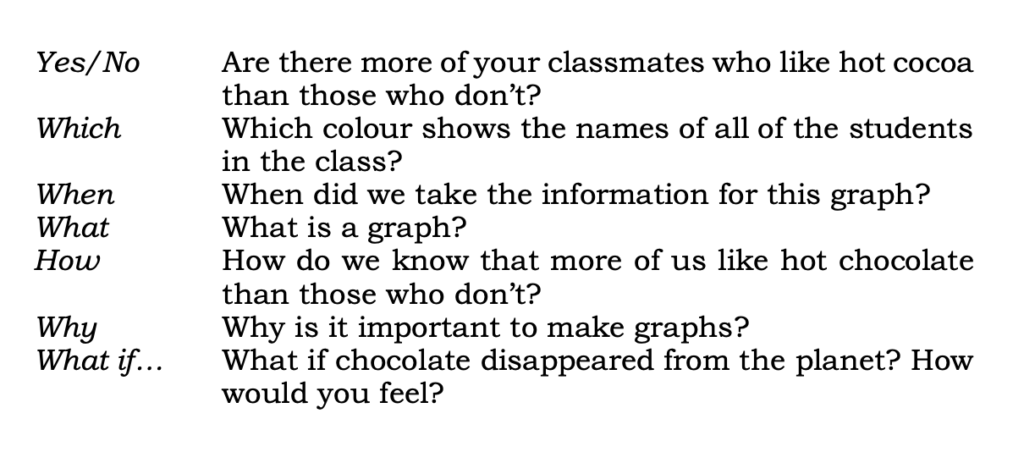You caught a beauty!!!
Download PDF of scaffold here.
theory behind scaffold…
Higher-order level questions – those that elicit deeper thinking – help students to stretch their thinking, and engage their curiosity, their reasoning ability, their creativity, and independence. These questions encourage students to open their minds, they offer opportunities to produce original thinking. A well-structured question – especially those begun with Bloom’s Verbs for Higher-Order Thinking– spark issues that might not have at first occurred to us; they encourage us to look at the issue from different perspectives. Higher-order level questions elicit fresh and sometimes even startling insights and ideas, they open roads for more open-mindedness, and enable teachers and students to work together in constructing understanding. If we use effective questioning skills in the educational environment, we help our students to be more effective thinkers at a very young age and so continue doing so in the future.*
Though we may see our young students’ future the professional world very far off, there is no time like the present to help them to develop effective questioning skills, which can often be the difference between gaining employment or not. One of the highly ranked skills wanted by employers is to ask insightful questions.
We can begin to teach critical thinking skills at a very young age. Pre-school children need to be critical thinkers who can make sense of information, analyse, compare, contrast, make inferences, and generate higher order thinking skills. In this way, they’ll be stronger learners as they grow.
Teachers often ask close-ended questions rather than open-ended questions. This limits the development of critical thinking in our students. We need to consider the questions we’re asking and perhaps reformulate them to help our students become more active participants in their own learning.
This scaffolding activity uses the question continuum – pushing students’ knowledge with lower- to higher-level thinking questions. For this reason, it is especially useful for lessons filled with graphs, tables and other statistics. The graphs we use with our students in pre-school are perfect for working on critical thinking skills.
You’ll see that the activity begins with the literal meaning of the data (lower-order thinking questions), and then students are encouraged to interpret and process this data through higher-order level thinking questions. In this way, students are gently pushed out of their comfort zone (ZPD*) and so are able to move forward in their learning.
*Zwiers, Jeff & Crawford, Marie (2011). Academic Conversations: Classroom Talk that Fosters Critical Thinking and Content Understandings, USA, Stenhouse Publishers.
**ZPD = Zone of Proximal Development: the distance between the actual developmental level as determined by independent problem solving and the level of potential development as determined through problem solving under adult guidance, or in collaboration with more capable peers” (Vygotsky).
step by step…
1. Choose a graph or table from the unit you’re about to begin. (See example on right of a graph on hot chocolate.)
2. Based on graph, before the lesson, think about various examples of lower- and higher-order thinking questions from the question continuum. (See examples below.)
3……………..

Here Are Some Questions You Can Use For The Cocoa Graph:
Here Are Other Questions You Can Use For Other Graphs:
How did you decide that…?
How can you show me…?
Does ………………
How do you know…?
What could we do to make our graph more complete?
Is there a way we can check………?
What comes next?
How to teach Academic Language to Pre-Schoolers
video explanation of scaffold…


Scaffoldingmagic.com is your entryway into DYNAMIC bilingual learning methodologies, such as Phenomenon-Based Learning, CLIL, EMI, and ESL. You’ll find ways to implement critical thinking tools (DOK) to promote higher level thinking, the growth mindset, instill an ethic of excellence, deep reflection on learning, and all through multi-cultural, interdisciplinary activities. We have the keys to turning competences into action and to creating collective efficacy in your school so you move ahead as a unified, enthusiastic team.






